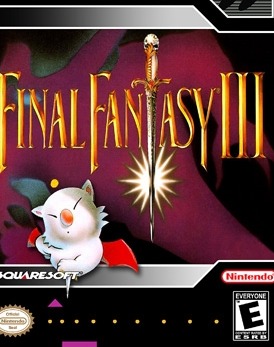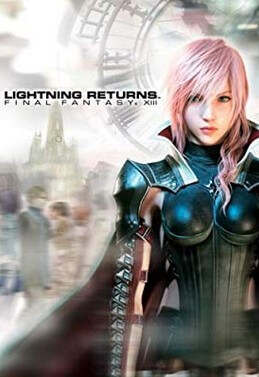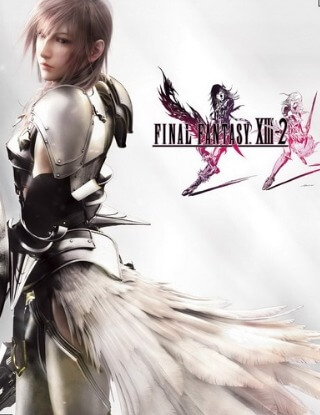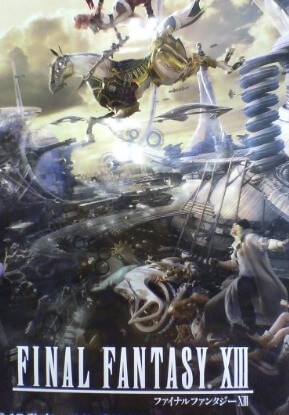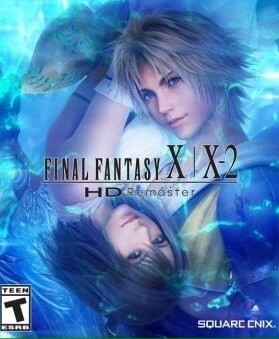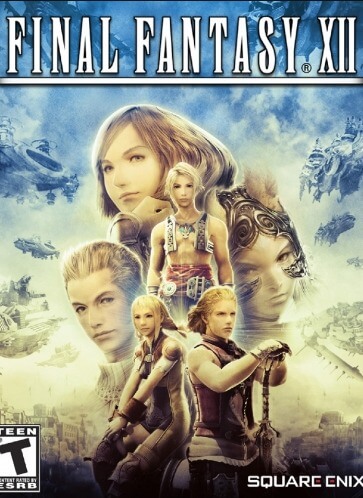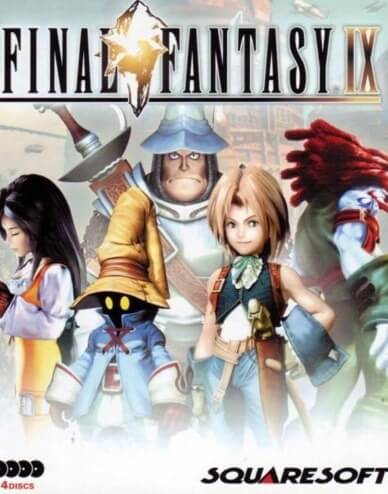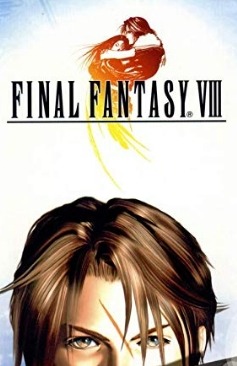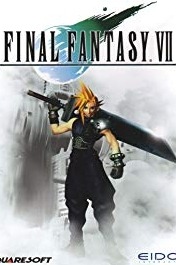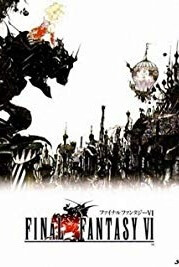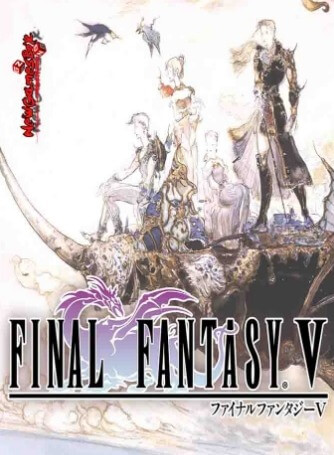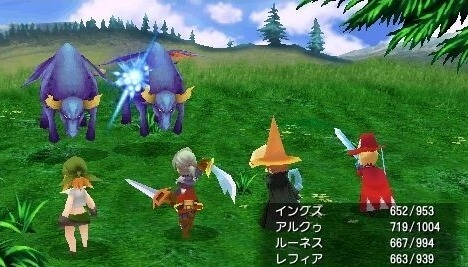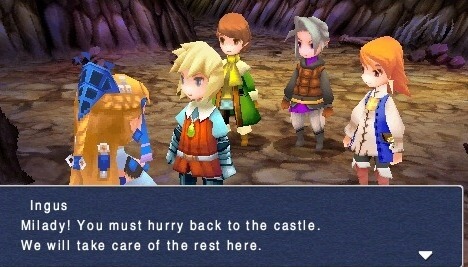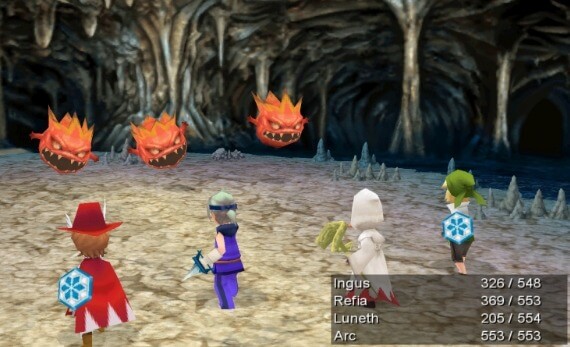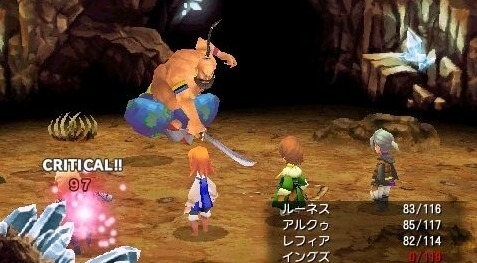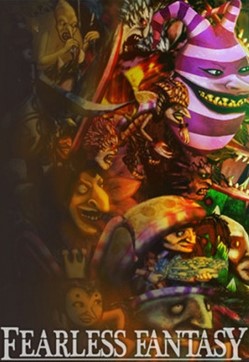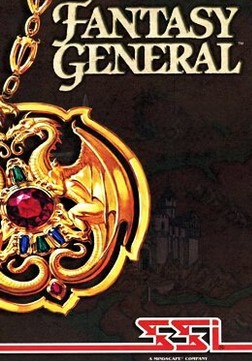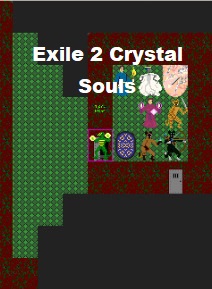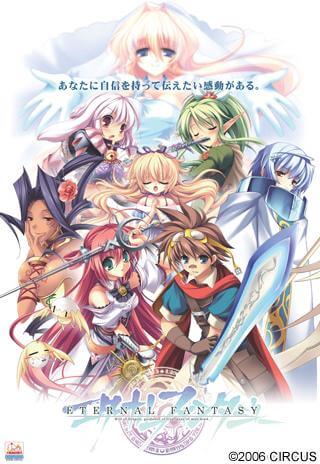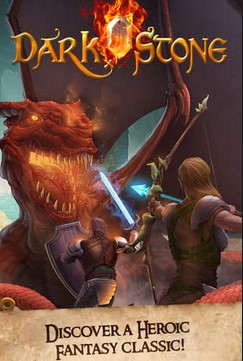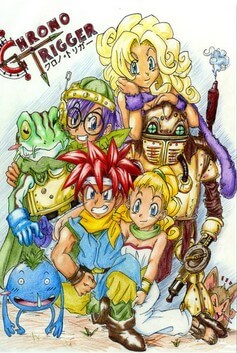Final Fantasy III is a role-playing video game developed and published by Square for the Family Computer. The third installment in the Final Fantasy series, it was released in 1990. It is the first numbered Final Fantasy game to feature the job-change system. The story revolves around four orphaned youths drawn to a crystal of light. The crystal grants them some of its power, and instructs them to go forth and restore balance to the world. Not knowing what to make of the crystal's pronouncements, but nonetheless recognizing the importance of its words, the four inform their adoptive families of their mission and set out to explore and bring back balance to the world.
The game was originally released in Japan on April 27, 1990. The original Famicom version sold 1.4 million copies in Japan. It had not been released outside Japan until a remake was developed by Matrix Software for the Nintendo DS on August 24, 2006. At that time, it was the only Final Fantasy game not previously released in North America or Europe. There had been earlier plans to remake the game for Bandai's WonderSwan Color handheld, as had been done with the first, second, and fourth installments of the series, but the game faced several delays and was eventually canceled after the premature cancellation of the platform. The Nintendo DS version of the game was positively received, selling nearly 2 million copies worldwide.
It was also released for the many other systems: the Japanese Virtual Console version (Famicom version) on July 21, 2009 (Wii) and January 8, 2014 (Wii U), an iOS port of the Nintendo DS remake on March 24, 2011, an Android version on March 12, 2012, a PlayStation Portable version on late September 2012 (downloadable only version outside Japan via PlayStation Network) and Microsoft Windows via Steam in 2014.
Gameplay
The gameplay of Final Fantasy III combines elements of the first two Final Fantasy games with new features. The turn-based combat system remains in place from the first two games, but hit points are now shown above the target following attacks or healing actions, rather than captioned as in the previous two games. Auto-targeting for physical attacks after a friendly or enemy unit is killed is also featured for the first time. Unlike subsequent games in the series, magical attacks are not auto-targeted in the same fashion.
The experience point system featured in Final Fantasy makes a return following its absence from Final Fantasy II. The character class system featured in the first game also reappears, with some modifications. Whereas in the original game the player chooses each character's class alignment at the start of the game and is then locked into that class for the duration of the game, Final Fantasy III introduces the "job system" for which the series would later become famous. Jobs are presented as interchangeable classes: in the Famicom version of the game, all four characters begin as "Onion Knights", with a variety of additional jobs becoming available as the game progresses. Any playable character has access to every currently available job and can change from job to job at will. Switching jobs consumes "capacity points" which are awarded to the entire party following every battle, much like gil. Different weapons, armor and accessories, and magic spells are utilized by each job. A character's level of proficiency at a particular job increases the longer the character remains with that job. Higher job levels increase the battle statistics of the character and reduce the cost in capacity points to switch to that job.
Final Fantasy III is the first game in the series to feature special battle commands such as "Steal" or "Jump", each of which is associated with a particular job ("Steal" is the Thief's specialty, whilst "Jump" is the Dragoon's forte). Certain jobs also feature innate, non-battle abilities, such as the Thief's ability to open passages that would otherwise require a special key item. Final Fantasy III is also the first game in the series to feature summoned creatures, which are called forth with the "Summon" skill.
Plot
Setting
One thousand years before the events in the game, on a floating continent hovering high above the surface of an unnamed planet, a technologically advanced civilization sought to harness the power of the four elemental crystals of light. They did not realize that they could not control such fundamental forces of nature. This power of light would have consumed the world itself had the light crystals not had their natural counterparts: the four dark elemental crystals. Disturbed by the sudden interruption of the careful balance between light and dark, four warriors were granted the power of the dark crystals to recapture the power of the light crystals. These so-called Dark Warriors succeeded in their quest, and restored harmony to the world. But their victory came too late to save the doomed civilization, whose culture was reduced to ruin, though their floating continent remained. On that continent, the circle of Gulgans, a race of blind soothsayers and fortune-tellers, predicted that these events will ultimately repeat.
Characters
Final Fantasy III focuses around four orphans from the remote village of Ur (while in the remakes you only begin as Luneth, slowly picking up the other 3 characters as you progress; a change from the original and from other early Final Fantasy titles), each starting off as an Onion Knight in the original game. However, they are Freelancers in the remakes, which also individualized the party members, giving them unique appearances (designed by Akihiko Yoshida), backstories, personalities and names:
Luneth (ルーネス Rūnesu) who symbolizes courage, an adventurous orphan boy raised in the village of Ur; Arc (アルクゥ Arukū) who symbolizes kindness, Luneth's childhood best friend and a timid yet intelligent young man; Refia (レフィア) who symbolizes affection, a girl raised in the village of Kazus who tires of her father's blacksmith training and often runs away from home, and Ingus (イングズ Inguzu) who symbolizes determination, a loyal soldier serving the King of Sasune, with a (mutual) soft spot for the princess Sara.
Xande (ザンデ Zande) is the antagonist the party seeks to stop for most of the game, though he is eventually revealed to merely be a pawn of the Cloud of Darkness (暗闇の雲 Kurayami no Kumo) (DarkCloud in the fan translation): a malevolent and vicious deity who wishes to push the world into a state of chaos and destruction by upsetting the equilibrium between light and darkness, allowing the Void to consume the world. Appearing in a female-like form, the Cloud of Darkness refers to herself in first-person plural because her two tentacles have minds of their own. Although she initially defeats the Light Warriors, they are resurrected with Unei and Doga's help. Then, with help from the Dark Warriors, they defeat the Cloud of Darkness, saving the world.
